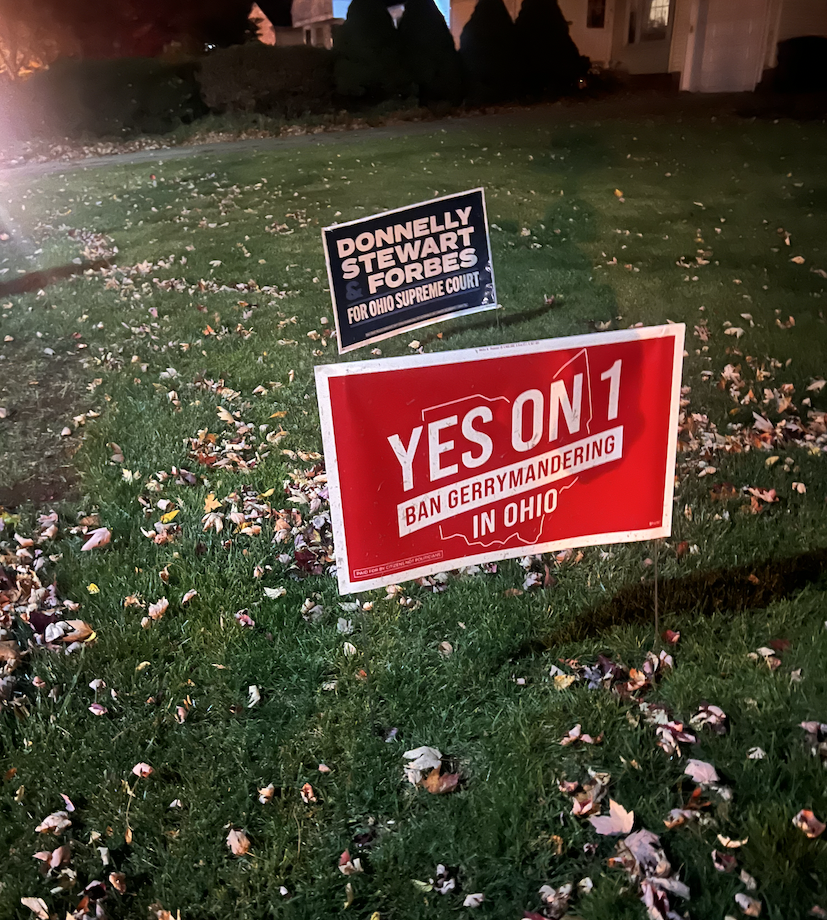Ohioans approved a constitutional amendment safeguarding access to abortion and other forms of reproductive healthcare on Nov. 7.
The amendment was written by the Ohio Physicians for Reproductive Rights, a political action committee committed to fighting for reproductive rights and protecting the value of medical practice.
“It was a historic day in not only Ohio history, but also American history,” said State Senator Kent Smith, who is a Democrat. “The Dobbs decision got rid of almost 50 years of Court precedent; so, the notion that now seven states have [successfully] pushed back against that decision is really substantial.”
The amendment protects a woman’s ability to get an abortion, but in accordance with preexisting Ohio law, abortion is legal up to 21 weeks and six days. After this time frame, a woman seeking to get an abortion would have to leave the state.
Additionally, the Ohio Revised Code Section 2910.10 still stands in which a woman is unable to get an abortion if she indicates that the reason for it is because the unborn child is suspected to have or is having Down Syndrome.
Ohio is the seventh state that has moved to protect abortion access since the US Supreme Court overturned Roe v. Wade in 2022.
Additionally, voter turnout was unexpectedly high despite the election falling on an odd year. More than 3.9 million Ohions showed up to vote, an 800,000 increase in the number of voters compared to the election in August. 56.6% of Ohioans voted yes while 43.4% voted no.
“The significance of Issue 1 passing is really seeing that the people of Ohio feel very strongly about protecting womens’ autonomy,” said Dr. Stacey Ehrenberg, an obstetrician-gynecologist (OB-GYN) in the Cleveland area. “The people of Ohio feel very passionately about keeping their healthcare between themselves and their healthcare providers, as opposed to having the government get involved in matters of their health.”
Ehrenberg is relieved that as a medical provider she can now give sound medical advice to patients without violating Ohio law.
“Instead of just being able to counsel them in line with evidence-based medicine, we can act in the state of Ohio along those lines as well,” she said.
Smith described the Nov. 7 turnout as a huge win for Ohioans, especially considering how much Republicans attempted to interfere with the results.
“In December of 2022 they passed a piece of legislation to get rid of August special elections, they had an illegal election in August to try to change the victory threshold, they altered the ballot language [for Issue 1], and the Senate launched a fake state sponsored website to push out misinformation,” he said. “They did a whole variety of things to try to confuse voters or get voters to vote against reproductive rights, and it didn’t work; it demonstrated that Ohioans would not be fooled.”
Moreover, Dr. Ashley Brant (another OB-GYN in the Cleveland area) explained how Ohio has had a history with passing legislation intending to reduce abortion accessibility. For example, under the Ohio Revised Code Section 2317.56, there is a mandatory 24 hour delay between when a patient consents to an abortion and when they actually get the abortion.
According to Brant, any woman who chooses to get an abortion is confident in their decision. Therefore, she believes that laws like these serve as barriers to reproductive healthcare.
“The strategy in Ohio has been to pass as many laws as possible and hope that cumulatively they make it difficult for lots of people to get abortion care,” she said.
Currently there are nine abortion clinics operating in Ohio. Ehrenberg, Smith and Brant feel that because the amendment language is so strong, abortion will be more accessible because there will be fewer barriers to receiving it.
“Going forward, the state will have a much harder time passing laws that restrict medical practice in ways that aren’t evidence-based,” Brant said.
Evidence-based medicine, she explains, takes into account both public health research and the individual patient’s situation and preferences in order to support the patient and help them make the best decision for themselves.
“The ultimate goal is that abortion access will improve and that every Ohioan should get to make their own decisions about their reproductive health care without interference from the state,” she added.
However, Brant worries that the concept of fetal viability, which the amendment defines as “the point in a pregnancy when, in the professional judgment of the pregnant patient’s treating physician, the fetus has a significant likelihood of survival outside the uterus with reasonable measures” will perplex the public and healthcare professionals though the amendment states that it will be determined on a case-by-case basis.
“Even among medical professionals, there is not a clear consensus of when a fetus is viable, and so I think that that’s the one area that will potentially leave room for confusion or uncertainty,” she said.
In the wake of the amendment’s passing, questions arise about what will happen to laws that contradict the amendment. Some of these laws include the on-hold “Heartbeat Bill,” HB 258 which bans abortion after a fetal heartbeat is detected.
Social studies teacher Pam Crossman explained how there are three ways in which the clashing laws might be removed. The first is that Ohio legislators could repeal the laws. The second is that either Ohio Attorney General Dave Yost could decide that the laws should not be enforced or Ohio Governor Mike DeWine could choose not to enforce them. Finally, the most anticipated way that Crossman and Smith both think is likely to occur will be that the Ohio courts rule the contradicting laws unconstitutional once a case is brought before the court.
However, Brant says bringing a case to court in order to have one of the irrelevant laws be ruled unconstitutional will take time because she explained how healthcare providers are relatively risk-free.
“Some healthcare providers could just decide they’re going to ignore the laws and use the Constitution as their defense if they get charged with a crime,” she said. “I would say that’s fairly risky [because] our jobs are on the line and many of us work within organizations that are not going to just allow us to break laws that are still on the books.”
Nevertheless, Ohio legislators are also unlikely to repeal laws that contradict the new amendment given that Republicans hold a supermajority in both houses.
Furthermore, shortly after the election, the house speaker, Senate president and a group of four Republican state legislators spoke out against the amendment’s passing and promised legislative action.
“To prevent mischief by pro-abortion courts with Issue 1, Ohio legislators will consider removing jurisdiction from the judiciary over this ambiguous ballot initiative,” stated a press release from the four GOP legislators on November 9. “The Ohio legislature alone will consider what, if any, modifications to make to existing laws based on public hearings and input from legal experts on both sides.”
According to Smith, eight days later, the house speaker and Senate president no longer talked about further plans to restrict the amendment’s access to abortion. He believes that if they were to somehow strike down the amendment, Republicans would make it easier for Sherrod Brown, a Democrat, to win a US senate seat and potentially for Joe Biden to win Ohio in the general election.
“So I think the fight for abortion access and reproductive rights in Ohio moves to Washington D.C. if they can get a Republican elected president [and] if they can flip Sherrod Brown out of the US Senate,” he said. “Now if they’re not successful with that, then I anticipate that they will come back and try to repeal [the amendment] in 2025.”
Nevertheless, Brant, Smith, and Ehrenberg are hopeful for other states to have the courage to stand up for their reproductive rights.
“My hope is that it will give other states the confidence to put this on the ballot and to let the people of those states speak for themselves,” said Ehrenberg. “I think the more states that allow healthcare decision making to remain in the exam room between a healthcare provider and their patient, the safer and healthier our country will be.”





















